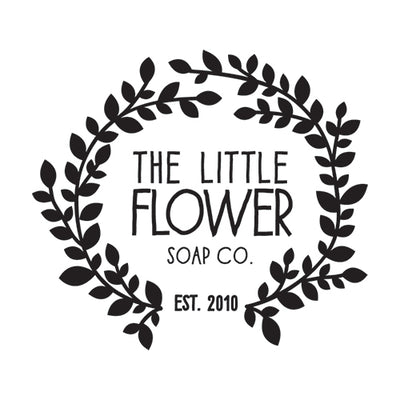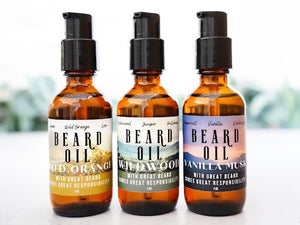Well-groomed facial hair signals meticulous self-care, professionalism, and personal style, yet many men struggle with dryness, patchiness, and dull texture. A strategic combination of three foundational botanical oils—jojoba, argan, and castor—creates a simple, science-backed solution that transforms an ordinary beard maintenance routine into a targeted treatment regimen. The synergy of this trio delivers moisture, strength, and fullness in balanced proportions, allowing even novice groomers to achieve noticeable results within days.
The Powerhouse Trio: Jojoba, Argan, and Castor Oils
Naming a single “best” beard oil ignores the complex needs of facial hair and underlying skin. Instead, pairing jojoba, argan, and castor oils replicates the ideal ratio of fatty acids, vitamins, and antioxidants that beard follicles thrive on. Each oil exhibits a unique molecular weight and absorption rate, which means the three work on separate layers of the hair shaft and dermis to offer multidimensional benefits.
When blended in equal parts, the mixture aligns with the skin’s natural sebum composition, helping regulate oil production while sealing moisture inside the cuticle. This combination lowers the risk of greasiness that can accompany heavier single-oil applications and, at the same time, eliminates the brittleness that lighter oils sometimes leave behind.
Rotating formulations seasonally—slightly more jojoba in summer for lighter coverage, a higher percentage of argan in winter for added emollience—fine-tunes performance without expanding the product lineup. The adaptability of these oils keeps your grooming shelf minimalistic while maximizing results.
Jojoba Oil: The Sebum Analog
Jojoba oil, technically a liquid wax ester, mirrors the chemical structure of human sebum more closely than any other natural ingredient. This biomimicry allows jojoba to penetrate quickly, delivering vitamin E and B-complex compounds directly into hair follicles without leaving a heavy residue. The oil’s innate antibacterial properties reduce the likelihood of folliculitis, an inflammation that often appears as red bumps beneath dense beards.
Because it is non-comedogenic, jojoba will not clog pores. Men prone to acne or ingrown hairs benefit from its lightweight profile, which creates a breathable barrier that deters environmental pollutants without suffocating the skin.
Argan Oil: The Moroccan Elixir of Shine
Pressed from the kernels of the argan tree, argan oil contains a high concentration of oleic and linoleic acids, both critical to the maintenance of cell membranes. Regular application smooths the cuticle layer of beard hairs, reflecting light more evenly for a natural sheen rather than an artificially glossy finish.
Squalene and polyphenols in argan oil double as antioxidants, shielding the beard from UV damage and urban pollution. For color-treated or sun-lightened beards, this protection minimizes fading and prevents a brittle straw-like texture.
Castor Oil: The Density Booster
Cold-pressed castor oil is famous for its elevated ricinoleic acid content, which stimulates prostaglandin E2, a compound linked to hair growth cycles. While genetic factors remain the predominant determinant of beard fullness, anecdotal and preliminary clinical data suggest castor oil can optimize follicle function where growth potential already exists.
The oil’s viscous nature locks down moisture for extended periods, making it particularly valuable for men in arid climates or those whose work exposes them to constant air conditioning or wind. Diluting castor oil with lighter jojoba prevents stickiness while preserving its occlusive strength.
Step-by-Step Guide: Incorporating the Trio into Your Daily Grooming Routine
Consistency, not complexity, drives results. Following a structured application sequence ensures each oil penetrates at the optimal moment and layer, minimizing waste and maximizing efficacy.
-
Cleanse Thoroughly
Begin with a gentle, low-sulfate beard wash to remove dirt and excess sebum. Warm water opens the cuticle, setting the stage for deeper oil absorption. Towel-dry until the beard is damp, not dripping. -
Dispense the Blend
In the palm, mix equal parts jojoba, argan, and castor oils—typically 3 to 5 drops total for short beards, up to 10 drops for longer styles. Warm the oils by rubbing palms together to increase fluidity. -
Apply to Skin First
Press fingertips into the skin beneath the beard, ensuring follicles receive nutrients directly. Massaging in small circular motions boosts microcirculation, encouraging nutrient delivery and relaxation. -
Work Oil Down the Hair Shaft
After treating the skin, glide palms over the beard from root to tip. Use a wide-tooth wooden comb to distribute the oils evenly, prevent tangling, and remove any shed hairs. -
Seal and Style
If extra hold is required, finish with a natural beard balm containing beeswax. Otherwise, allow the oil blend to air-dry. Style as preferred with a boar-bristle brush for added polish.
Morning application delivers daytime protection, but men living in harsh climates or growing lengthier beards may add a lighter nighttime routine using half the daytime dosage to avoid pillow staining.
Choosing Quality Oils
The burgeoning men’s grooming market offers an overwhelming array of beard oils, yet ingredient labels often hide diluted or rancid components behind marketing jargon. Selecting high-grade oils ensures the trio performs as promised and reduces the risk of irritation.
Look for packaging that specifies “cold-pressed,” “unrefined,” and “organic.” These labels indicate minimal heat exposure and chemical processing, both of which preserve bioactive compounds. Transparency regarding sourcing—such as co-op argan farms or sustainable jojoba plantations—demonstrates ethical standards and reduces contamination risks.
Cold-Pressed vs Refined Oils
Cold-pressed oils retain delicate vitamins and antioxidants that refining processes strip away. For example, refined castor oil may appear clearer but lacks the ricinoleic acid potency that drives its growth-stimulating reputation.
However, entirely unrefined oils occasionally contain microscopic plant sediments. Straining through cheesecloth before bottling removes these without compromising nutritional integrity, offering a middle ground between purity and practicality.
Packaging Matters
Opaque amber or cobalt glass bottles block UV rays that accelerate oxidation. Plastic containers are permeable to air, shortening shelf life, and can leach endocrine-disrupting chemicals if exposed to heat.
An integrated dropper cap simplifies hygienic dosing, limiting bacterial contamination. Avoid open-mouth bottles that require fingers or cotton pads for application, as they foster microbial growth.
Understanding Beard Hair Physiology
Facial hair differs microscopically from scalp hair. It possesses a flatter, ribbon-like shape and grows from follicles rich in androgen receptors. These characteristics render beard hair coarser and more susceptible to kinking, which can lead to split ends if left unmanaged.
The sebaceous glands in the face produce less oil than those on the scalp, particularly as men age or live in cold climates. Without adequate supplementation, the beard dries out, amplifying wiry texture and prickliness.
Lipid Layer Depletion
Frequent washing with harsh cleansers, chlorinated pool water, or even daily hot showers strip the natural lipid layer. Once compromised, moisture evaporates rapidly, resulting in the frizz familiar to many beard growers.
The jojoba-argan-castor trio restores this barrier by matching the lipid profile and delivering occlusives that physically prevent transepidermal water loss. Over time, the hair shaft’s cuticle plates flatten, and the beard feels noticeably softer.
Follicular Nutrient Demand
Facial hair follicles transition quickly through anagen (growth) and catagen (regression) phases, making them sensitive to nutritional fluctuations. Vitamin E, omega-9 fatty acids, and phenolic antioxidants supplied by the oil blend feed keratin synthesis, stabilizing growth cycles.
Proper blood flow, stimulated by massage during oil application, complements topical nourishment by delivering systemic nutrients that target the papilla, the follicle’s growth center.
Advanced Blending Techniques
While a 1:1:1 ratio suits most men, tailoring dilution can fine-tune performance. High-humidity regions may favor a lighter 50% jojoba, 30% argan, 20% castor mixture to prevent buildup. Conversely, high-altitude or winter climates can flip the proportions, prioritizing castor oil for enhanced occlusion.
Incorporating essential oils—never exceeding a 2% dilution—adds both fragrance and therapeutic benefits. For instance, cedarwood offers a warm, masculine scent and can help regulate sebum, while tea tree provides antimicrobial protection for acne-prone skin.
Emulsification for Leave-In Mists
Blending the trio with a light hydrosol and natural emulsifier yields a quick-drying beard mist ideal for midday refreshment. This technique requires careful phase mixing to prevent separation but rewards users with feather-light conditioning that won’t disturb morning styling.
Always test small batches and store them refrigerated. Water content introduces microbial risks, so a natural preservative such as Leucidal Liquid or potassium sorbate prolongs safety without synthetic parabens.
Addressing Common Concerns
Even with premium oils, questions arise regarding acne flare-ups, lingering greasiness, or insufficient scent longevity. These issues often trace back to over-application or mismatched ratios rather than flaws in the oils themselves.
Begin conservatively; adding an extra drop is easier than correcting oversaturation. If acne appears, replace one part argan with grapeseed oil for its lighter feel and higher linoleic content, which tends to calm clogged pores.
Beardruff (Beard Dandruff)
Flaking beneath the beard signals dehydrated skin. Jojoba’s sebum-mimicking qualities rehydrate, while castor’s thick consistency seals in moisture. A weekly exfoliation with a soft bristle brush loosens dead cells, allowing oils to reach fresh skin layers.
Persisting beardruff may indicate seborrheic dermatitis, requiring medicated shampoos containing ketoconazole. Oils can complement but not replace targeted medical treatments, so consult a dermatologist when necessary.
Patchiness and Growth Plateaus
Castor oil’s ricinoleic acid may jump-start dormant follicles, but results depend on genetics and consistent use over several hair cycles—usually three to four months. Pair topical care with balanced nutrition, adequate sleep, and stress management for holistic growth improvement.
Minoxidil is a pharmacological option for severe patchiness, yet integrating the oil trio sustains new growth by enhancing follicular health once minoxidil is discontinued.
Storage and Shelf Life
Proper storage protects potency. Keep oils in a cool, dark place away from direct sunlight or heating vents. Refrigeration is unnecessary for jojoba and argan, but castor oil benefits from slightly cooler temperatures to slow oxidization.
Most cold-pressed oils remain stable for 12 to 18 months. Regularly check for rancid odors or cloudiness, both indicators of oxidation. Incorporating 0.05% rosemary antioxidant or vitamin E extends shelf life naturally.
Complementary Grooming Practices
While oils provide the biochemical foundation for beard health, mechanical grooming habits refine texture and shape. Brushing with boar bristles distributes sebum and oil evenly, preventing the greasy roots and dry ends phenomenon.
Periodic trims every four to six weeks remove split ends before they travel up the shaft, maintaining a fuller, tidier appearance. Steam treatments—simply allowing a hot shower’s steam to envelop the beard for two minutes—open cuticles, letting the oil trio penetrate more deeply when applied immediately afterward.
Frequently Asked Questions
-
Can the oil trio replace a dedicated beard balm?
They provide moisturizing and softening benefits, but balms add hold via waxes. Men seeking light control may skip balm; those sculpting elaborate styles benefit from using both. -
How soon are results visible?
Softness improves after the very first application. Fuller appearance and reduced patchiness typically emerge between weeks four and eight with consistent use. -
Is there a best time of day to apply the oils?
Morning applications protect against environmental stressors, while nighttime use aids repair processes. Choose one comprehensive application or split smaller doses between both. -
Are these oils safe for color-treated beards?
Yes. Argan and jojoba stabilize pigment molecules and add UV protection, often extending the vibrancy of dye jobs.
Mastering beard care revolves around understanding both the science of hair physiology and the practicalities of daily grooming. Harnessing the complementary strengths of jojoba, argan, and castor oils offers a streamlined yet powerful path toward a healthier, more refined beard. With mindful selection, consistent application, and supportive grooming habits, the transformative potential of this oil trio becomes evident in texture, shine, and overall beard vitality.

